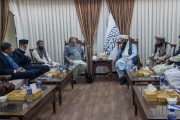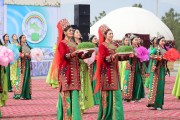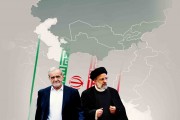Publish Date
Wednesday 21 December 2022 - 12:17
recommended
0
Changing the demographic context of some Afghan regions: Effects & Implications
In recent years, the demographic context in the major cities of Afghanistan has changed significantly due to the migration of villagers and the return of immigrants from abroad. This type of demographic context change, usually takes place without a political plan, and not only does it not cause any sensitivity or reaction, but also results in creating cultural diversity and job opportunities, strengthening common interests and growing social foundations. The serious reaction and sensitivity to the process of changing the demographic context comes from the fact that some Afghan governments in the past and present have implemented the policy of changing the demographic context in some areas widely and forcibly. The large displacement of Pashtun tribes in Tajik and Uzbek areas of northern Afghanistan and the handing over of the fertile lands of those areas as a macro policy, began during the time of Abdur Rahman Khan and was given a legal justification during the time of Amanullah Khan. Evidence shows that this policy is now back on the agenda once again.
By: AbdulRahim Kamel
Approach
In recent years, the demographic context in major cities of Afghanistan has changed significantly due to the migration of villagers to the cities. The return of Afghan immigrants from neighboring countries and their collective settlement in big cities has also been one of the reasons for changing the demographic context in Afghan cities. This type of demographic context change usually takes place slowly without a political plan.
This type of demographic displacements not only does not cause any kind of sensitivity and reaction, but also results in creating cultural diversity and job opportunities, strengthening common interests and growing social foundations, and is also welcomed by social elites.
The serious reaction and sensitivity toward the process of changing the demographic context comes from the fact that some Afghan governments in the past and present have implemented the policy of changing the demographic context in some areas widely and forcibly.
The large displacement of Pashtun tribes in the northern regions of Afghanistan and the wide distribution of the fertile lands of those regions as a tribal macro-policy, started during the time of Amir Abdur Rahman. During the time of Amanullah Khan, it was given a legal justification and became a government regulation which is now available under the name "The Settlers to Qataghan Act."
(Qataghan land or Qataghan province was a historical geography in northern Afghanistan that included the current provinces of Baghlan, Kunduz, Balkh and Samangan. In the 19th century, vast lands extended from Kunduz province to today’s Badakhshan, were considered a single province called Qataghan-Badakhshan province and was governed by one ruler. In 1963, Qataghan-Badakhshan province was abolished and since then, this territory was divided into four separate provinces, namely Badakhshan, Baghlan, Kunduz and Takhar.)
The policy of moving the Pashtun tribes in the fertile areas of Afghanistan continued during Zahir Shah’s reign. This policy caused the creation of a class-based society and the deprivation of the rest of the Afghan ethnic groups, which has seriously damaged the solidarity and spirit of convergence among Afghan tribes till now. However, the implementation of this historical policy with the aim of creating extensive changes in the demographic context of certain regions of Afghanistan, is pursued more in the second government of Taliban. In this article, this issue has been discussed.
First: the policy of demographic context change, in the Taliban government
The policy of changing the demographic context in some specific areas of Afghanistan during the Taliban second Emirate, has caused serious reactions in Afghanistan. It seems that the military and political developments, especially the local support from / resistance against the Taliban since 1990s, have made the Taliban determined to make extensive changes in the demographic context in the northern and southwestern provinces of Afghanistan. The perspective of this policy can be examined as follows:
1- Settlement of Pashtuns in the northern provinces of Afghanistan
Currently, the Taliban government is rapidly, widely and openly implementing the settlement program of Afghan Pashtuns in the northern provinces of Afghanistan, as a very powerful process.
The evidence shows that this great process is being implemented in both civil and government sectors.
According to media reports, several hundred families have now been forcibly displaced from some areas in the northern provinces of Afghanistan. According to the local people, all families living in these areas have been forcibly displaced through dubious lawsuits and without going through court procedures, only by the order of the local Taliban rulers. Currently, in some districts of Daikundi province in central Afghanistan and Khwaja Bahauddin district in Takhar province in northern Afghanistan, such civil lawsuits and forced migrations are widely observed.
So far, media outputs have published videos and documentary reports about these conflicts, some of them have been sporadically discussed by religious scholars and Afghan legal associations inside and outside the country.
Usually, those who are forced to migrate by local rulers, no longer have the ability or possibility to return peacefully. Last year, after the forced migration of more than four hundred families in Uruzgan Province, most of them had to leave Afghanistan and immigrate to Iran in order to continue their lives. In this way, some Pashtun tribes of Afghanistan will settle in these areas, and change the demographic context of that area through a social process.
In addition, sometimes the repetition of some complex events in some areas of northern Afghanistan causes many doubts. In recent months, the villagers’ houses in Takhar province - as a province which is subject to demographic context change - were extensively burned down at night, which caused great damage to the local people and they inevitably abandoned the area. This event was also repeated in Maidan Wardak Province. According to historical data, such areas become uninhabited and abandoned for a while and then turn into pastures for the Pashtun nomads. These nomads have been legally allowed to carry weapons since the time of royal governments.
Another issue that has recently been discussed by analysts in Central Asia, is the Qosh Tepa canal project, which transfers the water of Amu River to the vast plains of the northern provinces. This canal starts from the Amu River, passes through the provinces of Balkh, Jawzjan and Faryab, and finally ends in the vicinity of the Turkmenistan border after a distance of 280 km. The Taliban government is seriously implementing this project through internal and external resources, and its first phase has been put into operation ahead of schedule. Afghanistan people are happy with the development of the country, but the problem is that the change in demographic context will cause the lands around this canal to be widely distributed among the Pashtun tribes living in the south and east of Afghanistan, so that they can be encouraged to migrate to these provinces.
2- Settlement of Pakistani Pashtuns on the border with Tajikistan
Apart from the Pashtuns living in Afghanistan, the plan to move the Pashtuns of Pakistan North Waziristan and Khyber Pakhtunkhwa to Takhar province, which borders with Tajikistan, is also being carried out recently. After the government of Pakistan cleared the tribal areas of Pakistan several times from the presence of Pakistani Taliban fighters in the past years, several thousand families migrated to Afghanistan, along with the armed opposition group of the Pakistani Taliban. Last year, a few months after the Taliban takeover, the government of Pakistan bombarded the camps of these Pakistani immigrants in Logar and Khost provinces, which was encountered with a serious response from the Taliban. The government of Pakistan has recently asked the Taliban government to move theses immigrants away from the border between the two countries and move them to the north of Afghanistan. The evidence shows that since this spring, preparations have been made for moving and resettlement of these several thousand Pashtun families from North Waziristan to Takhar province on the border with Tajikistan. The government of Tajikistan seems worried about the resettlement and transfer of these families.
3- Settlement of Pashtun immigrants in provinces bordering Iran
The evidence shows that the settlement plan for Pashtun immigrants and nomads is now slowly underway in Farah Province near the borders of Iran, after the same plan implemented in the suburbs of Herat. In the last efforts, on September 15 of this year, a town with an area of 3020 hectares in the outskirts of Farah city, was allocated for settling Pashtun nomads, and the process of distributing land to them started. According to the Bakhtar news agency, the Taliban government has ordered the officials to act as soon as possible to provide the services they need.
Second: the implications of the policy of demographic context change by the Taliban
1- Implications of the policy for the Taliban government
With a brief look at the political developments of the last hundred years in Afghanistan, it can be understood that the roots of these developments lie in the social context. From a macro view, the rural uprisings in Afghanistan have either overthrown governments in Afghanistan, or prevented their absolute domination in some areas of the country. During the first government of Taliban, Panjshir and Takhar provinces resisted under the leadership of Ahmad Shah Massoud, and now the Taliban rulers may still feel threatened from this region.
The Taliban government wants to change the social bases of the resistance front, by changing the demographic context in northern provinces. By donating agricultural lands and creating necessary economic opportunities for Pashtun immigrants and nomads, the Taliban government makes them indebted and loyal to the Kabul government. In this case, they will fight as a local army against any kind of rebellion against the Taliban. So, there is no need to deploy government army units in these provinces, and the cost will be saved for the Kabul government.
The implementation of the plan to move Pakistani Pashtun immigrants to northern Afghanistan, especially to Takhar province which borders with Tajikistan, benefits the Taliban government in various ways. On the one hand, the Taliban relieves the Pakistani government from worrying about the growth and recruitment of the Pakistani Taliban and oppositions on the borders between Afghanistan and Pakistan; and on the other hand, saves the Pashtun people from homelessness, and by settling them, it causes a change in the demographic context in northern Afghanistan. At the same time, this Taliban policy highlights the good behavior and hospitality of the Taliban government towards the Pakistani Taliban and other migrant military groups in Afghanistan. Most importantly, the Taliban government can take revenge on the Tajik government for sheltering the leaders of the Afghan resistance front.
2- implications of the policy for Afghanistan's neighbors
Experience has shown that aligned social groups in the border of two countries can sometimes violate the security and border protocols and create direct relations with each other, which causes severe troubles for the governments. It is obvious that the presence of radical and extremist social groups on both sides of a common border, finally provides a safe area for recruitment and training. On its common borders with Afghanistan, the government of Iran has paid a lot of costs and sacrifices in terms of radical social opinions and drug trafficking.
The Central Asian governments bordering Russia are also worried about the demographic context change of Afghanistan in their borders. This concern intensified due to the fact that in the last years of Ashraf Ghani's rule, the arrested ISIS families were moved from temporary camps in eastern Afghanistan to northern Afghanistan through a specific process.
What recently has worried the government of Russia and Central Asian countries is the bitter historical experience in Afghanistan. During the Cold War and Zahir Shah's rule, the American government established the Kajaki Dam canal on the Helmand River with a large financial cost. Finally, vast lands in the south of Afghanistan, instead of being used for planting wheat, were turned into vast fields to supply opium for consumption in the region. Some analysts believe that by moving the Pashtun tribes of southern and eastern Afghanistan around the Qosh Tepa canal (which has a warm and suitable climate), the experience of large-scale drug planting may occur on the borders of Central Asian countries this time.
In the meantime, the government of Tajikistan is highly worried about the settlement and relocation of Pashtuns from Pakistan's North Waziristan in Takhar province. This concern increased when a group called the Tajik Taliban announced its emergence, and Mehdi Arsalan, one of the commanders of the Tajik Taliban, settled with his men in Takhar province of Afghanistan.
3- Implications of the policy for Afghan people
Ethnic diversity makes a society prosperous and beautiful. But the previous governments of Afghanistan failed to use ethnic diversity as a social capital in the right track. The rulers and some political leaders of Afghanistan deliberately tried to ethnicize politics in Afghanistan, in order to create a supporting coverage for themselves by inciting racial and ethnic feelings.
Undoubtedly, the deliberate and forced change of the demographic context in some regions of Afghanistan, especially in the regions bordering with neighboring countries, will deepen the social differences in Afghanistan. It may be beneficial for the government and political leaders in the short term, but it destroys all the grounds of becoming a nation and the process of nation building.
On the other hand, changing the demographic context with the aim of suppressing and destroying the cultural capitals of other ethnic groups, psychologically causes a deep gap and hostility among different ethnic groups in the country.
With no foresight, Afghanistan's governments have tried to impose a specific language and culture on all different regions and ethnic groups, in order to weaken the language and culture of other ethnic groups. The policy of substituting the title of “Dari language” with “Persian language” is precisely to cut off the linguistic and cultural relations of the Persian-speaking people of Afghanistan with Iran. Due to this wrong policy, it has been many years that new developments and initiatives in the Persian language are being fought. The consequence of this type of policy is the weakening of the rich Persian culture in Afghanistan and the deprivation from it. With the change in the demographic context of Farsi speaker communities, the sense of protection and strengthening of Persian language and culture decreases or disappears over time.
The last word is that the deliberate change of the demographic context by the Afghan governments, provides a wider ground for social differences, and postpones the process of nation building and national integration until an unspecified time.
AbdulRahim Kamel, is an afghan expert
Approach
In recent years, the demographic context in major cities of Afghanistan has changed significantly due to the migration of villagers to the cities. The return of Afghan immigrants from neighboring countries and their collective settlement in big cities has also been one of the reasons for changing the demographic context in Afghan cities. This type of demographic context change usually takes place slowly without a political plan.
This type of demographic displacements not only does not cause any kind of sensitivity and reaction, but also results in creating cultural diversity and job opportunities, strengthening common interests and growing social foundations, and is also welcomed by social elites.
The serious reaction and sensitivity toward the process of changing the demographic context comes from the fact that some Afghan governments in the past and present have implemented the policy of changing the demographic context in some areas widely and forcibly.
The large displacement of Pashtun tribes in the northern regions of Afghanistan and the wide distribution of the fertile lands of those regions as a tribal macro-policy, started during the time of Amir Abdur Rahman. During the time of Amanullah Khan, it was given a legal justification and became a government regulation which is now available under the name "The Settlers to Qataghan Act."
(Qataghan land or Qataghan province was a historical geography in northern Afghanistan that included the current provinces of Baghlan, Kunduz, Balkh and Samangan. In the 19th century, vast lands extended from Kunduz province to today’s Badakhshan, were considered a single province called Qataghan-Badakhshan province and was governed by one ruler. In 1963, Qataghan-Badakhshan province was abolished and since then, this territory was divided into four separate provinces, namely Badakhshan, Baghlan, Kunduz and Takhar.)
The policy of moving the Pashtun tribes in the fertile areas of Afghanistan continued during Zahir Shah’s reign. This policy caused the creation of a class-based society and the deprivation of the rest of the Afghan ethnic groups, which has seriously damaged the solidarity and spirit of convergence among Afghan tribes till now. However, the implementation of this historical policy with the aim of creating extensive changes in the demographic context of certain regions of Afghanistan, is pursued more in the second government of Taliban. In this article, this issue has been discussed.
First: the policy of demographic context change, in the Taliban government
The policy of changing the demographic context in some specific areas of Afghanistan during the Taliban second Emirate, has caused serious reactions in Afghanistan. It seems that the military and political developments, especially the local support from / resistance against the Taliban since 1990s, have made the Taliban determined to make extensive changes in the demographic context in the northern and southwestern provinces of Afghanistan. The perspective of this policy can be examined as follows:
1- Settlement of Pashtuns in the northern provinces of Afghanistan
Currently, the Taliban government is rapidly, widely and openly implementing the settlement program of Afghan Pashtuns in the northern provinces of Afghanistan, as a very powerful process.
The evidence shows that this great process is being implemented in both civil and government sectors.
According to media reports, several hundred families have now been forcibly displaced from some areas in the northern provinces of Afghanistan. According to the local people, all families living in these areas have been forcibly displaced through dubious lawsuits and without going through court procedures, only by the order of the local Taliban rulers. Currently, in some districts of Daikundi province in central Afghanistan and Khwaja Bahauddin district in Takhar province in northern Afghanistan, such civil lawsuits and forced migrations are widely observed.
So far, media outputs have published videos and documentary reports about these conflicts, some of them have been sporadically discussed by religious scholars and Afghan legal associations inside and outside the country.
Usually, those who are forced to migrate by local rulers, no longer have the ability or possibility to return peacefully. Last year, after the forced migration of more than four hundred families in Uruzgan Province, most of them had to leave Afghanistan and immigrate to Iran in order to continue their lives. In this way, some Pashtun tribes of Afghanistan will settle in these areas, and change the demographic context of that area through a social process.
In addition, sometimes the repetition of some complex events in some areas of northern Afghanistan causes many doubts. In recent months, the villagers’ houses in Takhar province - as a province which is subject to demographic context change - were extensively burned down at night, which caused great damage to the local people and they inevitably abandoned the area. This event was also repeated in Maidan Wardak Province. According to historical data, such areas become uninhabited and abandoned for a while and then turn into pastures for the Pashtun nomads. These nomads have been legally allowed to carry weapons since the time of royal governments.
Another issue that has recently been discussed by analysts in Central Asia, is the Qosh Tepa canal project, which transfers the water of Amu River to the vast plains of the northern provinces. This canal starts from the Amu River, passes through the provinces of Balkh, Jawzjan and Faryab, and finally ends in the vicinity of the Turkmenistan border after a distance of 280 km. The Taliban government is seriously implementing this project through internal and external resources, and its first phase has been put into operation ahead of schedule. Afghanistan people are happy with the development of the country, but the problem is that the change in demographic context will cause the lands around this canal to be widely distributed among the Pashtun tribes living in the south and east of Afghanistan, so that they can be encouraged to migrate to these provinces.
2- Settlement of Pakistani Pashtuns on the border with Tajikistan
Apart from the Pashtuns living in Afghanistan, the plan to move the Pashtuns of Pakistan North Waziristan and Khyber Pakhtunkhwa to Takhar province, which borders with Tajikistan, is also being carried out recently. After the government of Pakistan cleared the tribal areas of Pakistan several times from the presence of Pakistani Taliban fighters in the past years, several thousand families migrated to Afghanistan, along with the armed opposition group of the Pakistani Taliban. Last year, a few months after the Taliban takeover, the government of Pakistan bombarded the camps of these Pakistani immigrants in Logar and Khost provinces, which was encountered with a serious response from the Taliban. The government of Pakistan has recently asked the Taliban government to move theses immigrants away from the border between the two countries and move them to the north of Afghanistan. The evidence shows that since this spring, preparations have been made for moving and resettlement of these several thousand Pashtun families from North Waziristan to Takhar province on the border with Tajikistan. The government of Tajikistan seems worried about the resettlement and transfer of these families.
3- Settlement of Pashtun immigrants in provinces bordering Iran
The evidence shows that the settlement plan for Pashtun immigrants and nomads is now slowly underway in Farah Province near the borders of Iran, after the same plan implemented in the suburbs of Herat. In the last efforts, on September 15 of this year, a town with an area of 3020 hectares in the outskirts of Farah city, was allocated for settling Pashtun nomads, and the process of distributing land to them started. According to the Bakhtar news agency, the Taliban government has ordered the officials to act as soon as possible to provide the services they need.
Second: the implications of the policy of demographic context change by the Taliban
1- Implications of the policy for the Taliban government
With a brief look at the political developments of the last hundred years in Afghanistan, it can be understood that the roots of these developments lie in the social context. From a macro view, the rural uprisings in Afghanistan have either overthrown governments in Afghanistan, or prevented their absolute domination in some areas of the country. During the first government of Taliban, Panjshir and Takhar provinces resisted under the leadership of Ahmad Shah Massoud, and now the Taliban rulers may still feel threatened from this region.
The Taliban government wants to change the social bases of the resistance front, by changing the demographic context in northern provinces. By donating agricultural lands and creating necessary economic opportunities for Pashtun immigrants and nomads, the Taliban government makes them indebted and loyal to the Kabul government. In this case, they will fight as a local army against any kind of rebellion against the Taliban. So, there is no need to deploy government army units in these provinces, and the cost will be saved for the Kabul government.
The implementation of the plan to move Pakistani Pashtun immigrants to northern Afghanistan, especially to Takhar province which borders with Tajikistan, benefits the Taliban government in various ways. On the one hand, the Taliban relieves the Pakistani government from worrying about the growth and recruitment of the Pakistani Taliban and oppositions on the borders between Afghanistan and Pakistan; and on the other hand, saves the Pashtun people from homelessness, and by settling them, it causes a change in the demographic context in northern Afghanistan. At the same time, this Taliban policy highlights the good behavior and hospitality of the Taliban government towards the Pakistani Taliban and other migrant military groups in Afghanistan. Most importantly, the Taliban government can take revenge on the Tajik government for sheltering the leaders of the Afghan resistance front.
2- implications of the policy for Afghanistan's neighbors
Experience has shown that aligned social groups in the border of two countries can sometimes violate the security and border protocols and create direct relations with each other, which causes severe troubles for the governments. It is obvious that the presence of radical and extremist social groups on both sides of a common border, finally provides a safe area for recruitment and training. On its common borders with Afghanistan, the government of Iran has paid a lot of costs and sacrifices in terms of radical social opinions and drug trafficking.
The Central Asian governments bordering Russia are also worried about the demographic context change of Afghanistan in their borders. This concern intensified due to the fact that in the last years of Ashraf Ghani's rule, the arrested ISIS families were moved from temporary camps in eastern Afghanistan to northern Afghanistan through a specific process.
What recently has worried the government of Russia and Central Asian countries is the bitter historical experience in Afghanistan. During the Cold War and Zahir Shah's rule, the American government established the Kajaki Dam canal on the Helmand River with a large financial cost. Finally, vast lands in the south of Afghanistan, instead of being used for planting wheat, were turned into vast fields to supply opium for consumption in the region. Some analysts believe that by moving the Pashtun tribes of southern and eastern Afghanistan around the Qosh Tepa canal (which has a warm and suitable climate), the experience of large-scale drug planting may occur on the borders of Central Asian countries this time.
In the meantime, the government of Tajikistan is highly worried about the settlement and relocation of Pashtuns from Pakistan's North Waziristan in Takhar province. This concern increased when a group called the Tajik Taliban announced its emergence, and Mehdi Arsalan, one of the commanders of the Tajik Taliban, settled with his men in Takhar province of Afghanistan.
3- Implications of the policy for Afghan people
Ethnic diversity makes a society prosperous and beautiful. But the previous governments of Afghanistan failed to use ethnic diversity as a social capital in the right track. The rulers and some political leaders of Afghanistan deliberately tried to ethnicize politics in Afghanistan, in order to create a supporting coverage for themselves by inciting racial and ethnic feelings.
Undoubtedly, the deliberate and forced change of the demographic context in some regions of Afghanistan, especially in the regions bordering with neighboring countries, will deepen the social differences in Afghanistan. It may be beneficial for the government and political leaders in the short term, but it destroys all the grounds of becoming a nation and the process of nation building.
On the other hand, changing the demographic context with the aim of suppressing and destroying the cultural capitals of other ethnic groups, psychologically causes a deep gap and hostility among different ethnic groups in the country.
With no foresight, Afghanistan's governments have tried to impose a specific language and culture on all different regions and ethnic groups, in order to weaken the language and culture of other ethnic groups. The policy of substituting the title of “Dari language” with “Persian language” is precisely to cut off the linguistic and cultural relations of the Persian-speaking people of Afghanistan with Iran. Due to this wrong policy, it has been many years that new developments and initiatives in the Persian language are being fought. The consequence of this type of policy is the weakening of the rich Persian culture in Afghanistan and the deprivation from it. With the change in the demographic context of Farsi speaker communities, the sense of protection and strengthening of Persian language and culture decreases or disappears over time.
The last word is that the deliberate change of the demographic context by the Afghan governments, provides a wider ground for social differences, and postpones the process of nation building and national integration until an unspecified time.
AbdulRahim Kamel, is an afghan expert
News code:3280


















